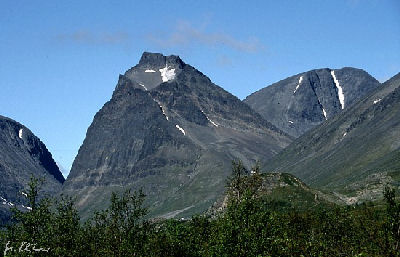Soil Erosion (1/2)
Soil Erosion
Erosion is the process by which the surface of the Earth is wearing away and material at the top layer (usually loose soil, sediments and rock) is being displaced to another location. Erosion is either mechanical and is caused by weather phenomena (wind, rain, frost, heat) or chemical, caused by human activity and the addition of chemicals to the soil (acid rain, fertilisers, loss of vegetation due to deforestation and overgrazing etc.).
Sandy soil is particularly vulnerable to the elements that cause erosion. The presence of large gaps between the soil particles makes it easier for the wind or the flow of surface water to move the soil particles. Clay soil is more resistant to erosion, as it is more compact.
However, bare clay soil is susceptible to rainfall and individual rain drops reach the soil at great speeds. Precipitation (rain, snow) infiltrates the gaps between the soil particles and loosens up the soil. During intense storms, the size of the droplets is bigger and the force with which they hit the soil is sufficient to break up and disperse the soil particles.

Source: USDA Natural Resources Conservation Service
The gaps that are created in the clay soil, not only make it easier to be washed away, but it reduces its ability to withhold water. As the soil becomes more porous (more gaps between the soil particles), more water is seeping through to the lower layers of the Earth's surface, and along with the water, the chemical nutrients are lost as well. As a result, the soil becomes less capable of supporting vegetation.
The rate of erosion is also affected by the slope of the soil. Gravity has a profound effect on the movement of soil particles, as the slope increases. Flat land is less susceptible to erosion, as water does not have a slope to go to and simply seeps through the soil. As the slope increases though, gravity forces water to move down that slope, which picks up and transfers soil particles during its movement. Thus, the soil is moving to lower altitudes and at the higher altitudes the underlying rock is exposed.

Source: Wikimedia Commons
Vegetation is protecting soil from erosion, by providing cover against the rain drops. This is done both by its canopy, but also by the litter that is deposited on the top soil layer and the organic matter layer that is formed there. In addition, the root system increases the compactness of the soil, as the minor roots attach themselves to the soil particles. When vegetation is removed, the soil is exposed to the erosion process mentioned above. The loss of nutrients and its ability to hold water, makes the soil less capable of supporting vegetation, leading to a never ending circle and continuously aggravating the effects of erosion. Eventually, the clay soil loses its original physical and chemical characteristics and is converted to sand.
Question:
Which of the following factors contribute to soil erosion?
- Wind
- Rain
- Thunder
- Sunlight
- Earthquakes
- Sea waves
